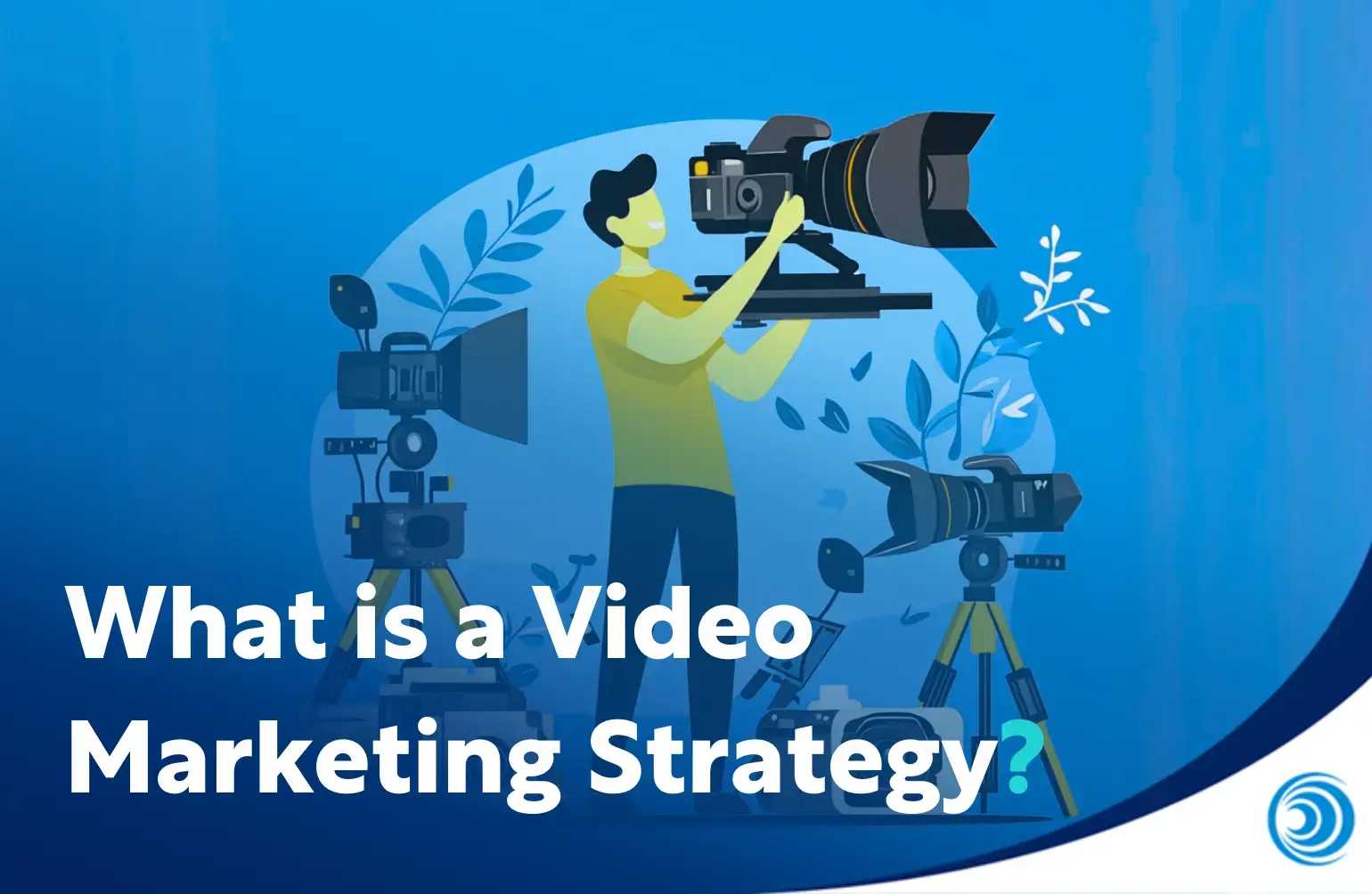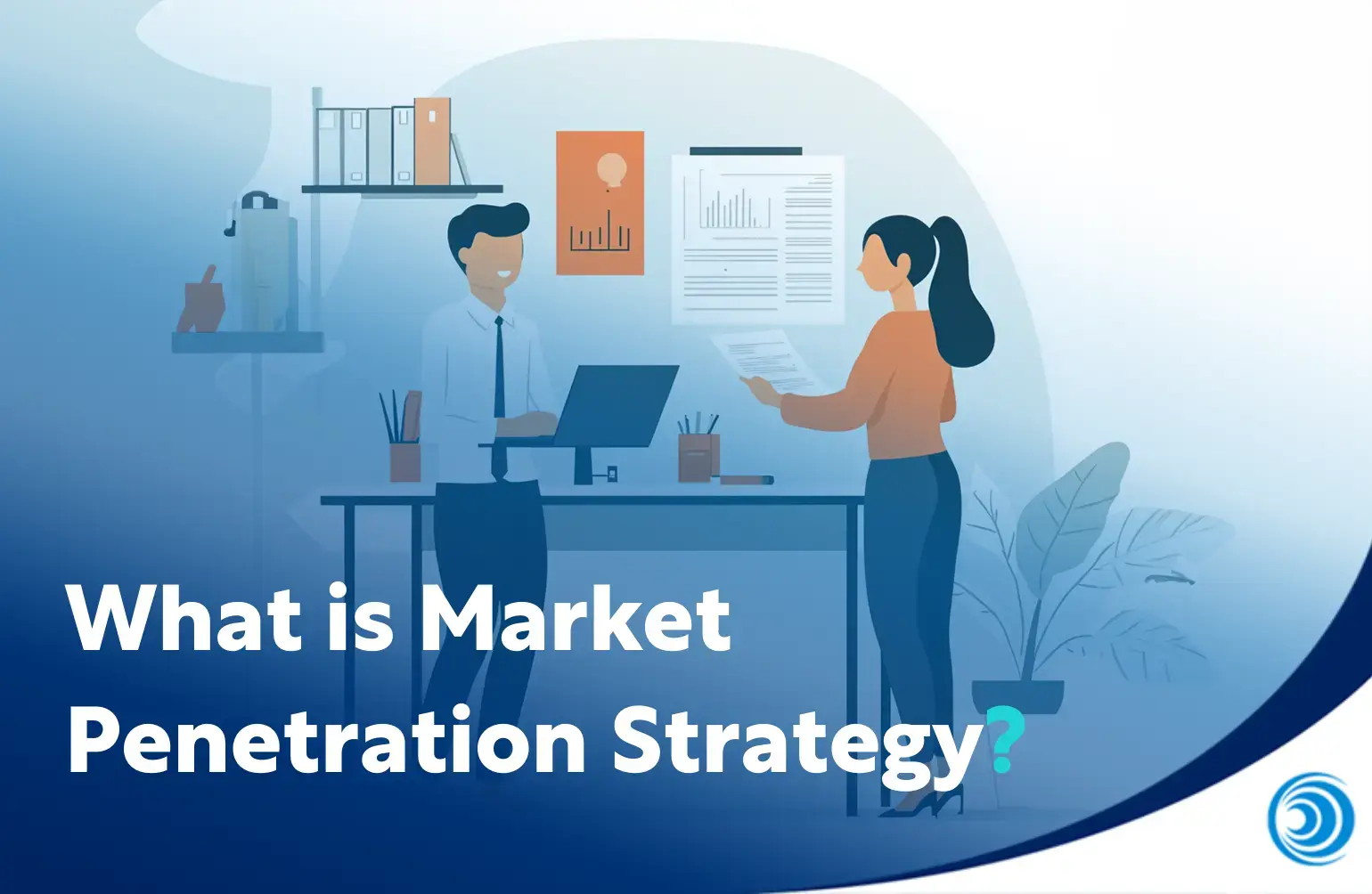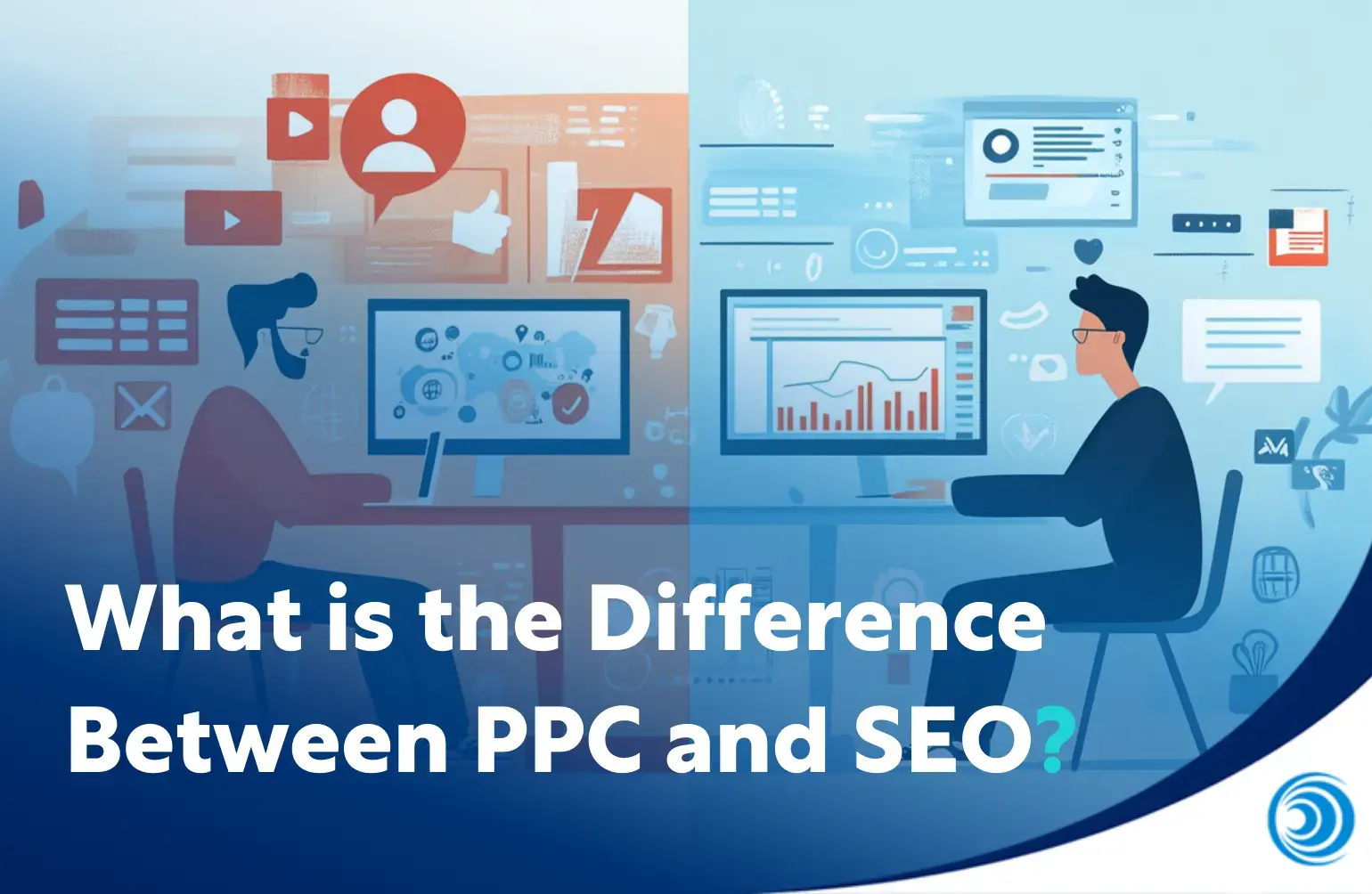
What is a Video Marketing Strategy? A Comprehensive Overview for 2025
Videos aren’t just pieces of content; they’re captivating stories, powerful connections, and high-impact tools for growth.
In 2025, marketing videos and video marketing aren’t just optional - they’re essential. From quick TikToks to immersive YouTube tutorials, videos have transformed the way brands engage with their audiences, build trust, and drive results.
But how do you harness this powerhouse medium effectively? What are the secrets to crafting a strategy that grabs attention and keeps brands top-of-mind? And more importantly, how is success measured in a world where algorithms and consumer preferences evolve at lightning speed?
This comprehensive guide dives deep into the world of video marketing, covering everything from strategy creation and SEO benefits to audience engagement and ROI measurement.
Ready to roll out your video marketing blockbuster? Let’s hit play!
What is Video Marketing?
Video marketing is a strategic promotional approach that employs bespoke video content to promote products, services, or brands, to engage the target audience and prompt actions such as purchases or subscriptions.
By incorporating video content into marketing campaigns, businesses can effectively convey their brand story and message, showcase their offerings, and begin building a rapport with video viewers on an emotional level.
A video campaign offers great versatility as it can be integrated across various platforms including social media, websites, and email marketing campaigns. This adaptability enables companies to engage with a diverse target audience and tailor brand videos to specific channels, enhancing overall engagement on each social media platform.
Types of Video Marketing
Video marketing efforts come in many forms, each tailored to meet different goals and connect with audiences in unique ways - the versatility of video types makes it a powerful tool for storytelling.
From short-form video content to longer explainer videos, choosing the right video marketing strategy, brands can successfully resonate with their target audience and achieve meaningful results.

Explainer Videos
Explainer videos, also known as educational videos, contain actionable and instructional information to explain points of interest or product features to the target customer.
Educational videos are an effective way to establish credibility amongst consumers, as the entire video focuses on informing rather than selling.
For example, PayPal uses explainer videos to showcase how their payment solutions work, offering clear, step-by-step guides for users unfamiliar with their platform.
Product Demos
Demo videos provide a detailed explanation of how a product works. The video footage often shows an employee using the product in real time, clearly demonstrating its features and functionality to consumers.
Demo videos are an effective video marketing strategy used to help boost brand image and build consumer trust in a business.
Stripe, frequently uses demo videos to show how their payment system integrates with eCommerce platforms, making it easier for businesses to adopt and use their service.
Customer Testimonial Videos
Customer testimonial videos feature past and current customers who have used the brand's products or services. Within the actual video, these individuals share their experiences to inspire viewers to try the product or service themselves.
Visual testimonials are a great way to showcase an existing case study or build credibility by providing social proof of the product or service's value.
Square uses customer testimonial videos to highlight the success stories of small businesses that have grown by using their payment systems and building trust with potential customers.
How-To Videos
It's in the name; how-to videos show viewers how to do something. They cover an array of topics and work for many industry verticals. How-to videos can help build consumer trust and position a brand as an expert in the field.
Revolut uses how-to videos to explain how to open an account, send international transfers, and utilise the app’s budgeting features.

Live-Streaming
More often than not, the video creation process consists of many stages, having been pre-recorded and edited.
However, many video marketers have begun to leverage live streaming. Many video hosting platforms - such as Instagram, YouTube, and TikTok - offer live-streaming options.
Live videos can be a great video strategy to directly engage with people and expand a brand's reach. For example, Visa hosts live-streamed events and webinars to educate audiences about their new payment innovations, keeping their viewers informed in real time.
Event Videos
Event videos aim to capture key moments and highlights from events and conferences hosted, sponsored, or attended by the company.
An event brand video is a great way to provide behind-the-scenes footage into a company's culture, which helps to connect with the audience on a personal level.
Mastercard frequently creates event videos from their sponsorship of global financial conferences, showcasing their involvement in fintech innovation.
Additionally, they can attract attention from those who couldn't attend the event, generating interest in future events.
Interviews
Interviews feature discussions with industry experts, members of the internal leadership team, influencers, and other relevant personnel.
Interview video content is a great way to establish authority and credibility among viewers, provide valuable insights, and humanise a brand.
Adyen often conducts interviews with its leadership team to discuss the future of digital payments and the trends shaping the industry.
Animated Videos
Animated videos are pieces of video content that include illustrations, graphics, or animations to tell a message or story.
An animated video strategy is a great way to simplify complex concepts and can be used for various purposes - whether that be explaining products or services, creating entertaining content, or demonstrations.
User-Generated Content
User-generated content involves video content created by users, followers, and customers, usually including reviews, testimonials, or demonstrating themselves using the product/service.
This type of video content strategy is useful in portraying a business' authenticity and credibility.
By encouraging genuine customers to share their experiences with the company, businesses can create relatable video content that can influence other companies at the top of the marketing funnel.
Why is Video Marketing Important Today?
Video marketing has transformed from a novelty to a necessity, solidifying its position as one of the most effective tools for businesses.
Since its emergence in 2005 with the launch of YouTube videos, video marketing has grown exponentially in both scope and influence.
The combination of smartphones, widespread internet access, and the pandemic-driven surge in online media consumption has video a dominant form of communication - with audiences spending an average of 17 hours a week watching videos online.
The benefits of video marketing go far beyond just its popularity. Social shares boosted engagement, and SEO improvements are just the beginning.
High-quality videos are driving tangible business results, with 83% of marketers citing its ability to generate leads and support customer acquisition.
Whether it's educating audiences, building trust, or driving sales, a successful video marketing strategy has been proven to be a versatile, high-impact medium for reaching audiences and fostering lasting connections.
The Benefits of Video Marketing
Video marketing has emerged as one of the most impactful ways to engage audiences, grow brand awareness, and drive results.
Captures Audience's Attention
Videos have a unique ability to captivate audiences from the very first frame. Whether it sparks laughter, curiosity, or excitement, a well-crafted video leaves an indelible mark.
More than half of all consumers prefer watching videos over reading blogs or scrolling through static images.
Videos allow businesses to convey messages quickly and dynamically, ensuring audiences stay engaged without losing interest.
With endless creative possibilities, a video marketing strategy enables brands to not only capture attention but also inspire action, turning viewers into loyal, returning customers.
Increases Brand Awareness
Video marketing is a game-changer for building brand awareness. By creating content that resonates emotionally and visually, brands can expand their reach and foster meaningful connections with their audience.
A memorable professional video positions your business as the go-to solution for common challenges, helping you stay top-of-mind with potential customers. This connection paves the way for stronger brand recognition, new leads, and increased sales.
With video, you’re not just telling a story - you’re creating a lasting impression that drives growth.
Mobile Compatibility
As 84% of people own a smartphone, it’s no surprise that over half of all videos are watched on mobile devices - whether that be on social media, search engines, video ads, or one of the many video platforms.
This compatibility offers marketers an unprecedented opportunity to connect with an expansive audience anytime, anywhere.
Optimising video content for mobile means shorter, visually striking formats designed to grab attention on small screens.
By embracing mobile-first video marketing strategies, brands can seamlessly reach and engage their audience, making their message accessible and impactful in the palm of their customers’ hands.
The Challenges of Video Marketing
Like any good thing, video marketing can have its downsides that marketers need to consider when creating their video marketing campaign.
Poor Quality Video Content
One potential drawback of employing video content in a marketing strategy is that substandard videos can do more harm than good.
Without polished production values, coherent storytelling, and engaging visuals, your brand risks appearing amateurish, undermining trust and credibility.
If a business cannot commit to producing well-executed video content, it may be better off avoiding this strategy altogether, rather than damaging its reputation with poor-quality material!
Costly Overheads
One of the largest hurdles of video marketing is its cost. Producing high-quality videos often requires a significant investment in equipment, talent, and editing resources.
From copywriting to purchasing cameras, microphones, and animation software, the expenses can quickly add up.
While it’s possible to shoot videos on a smartphone, polishing raw footage typically requires specialised expertise to create quality videos. Engaging a video production agency can be expensive, making it essential for businesses to carefully consider their budget before diving into video marketing. However, a marketing content agency could be a cheaper alternative!
Whilst there are AI video generators and other tools out there, they can produce generic, formulaic content that lacks the unique character and flair required to captivate viewers. They may also struggle to reflect subtle human emotions, resulting in an artificial feel that undermines authenticity.
Time-Consuming Video Production
Creating impactful video content marketing is a multi-stage process that demands careful planning and execution.
From pre-production tasks like defining objectives and script writing to production and post-production editing, each phase of the video process requires time and attention to detail.
While filming itself might be relatively quick, the post-production stage - where footage is reviewed, refined, and edited - can be especially time-intensive, depending on the complexity of the project.
Marketers must ensure they allocate enough time to craft videos that not only meet deadlines but also captivate their audience and deliver value.
Lack of Appeal
While video is a powerful medium, it isn’t a one-size-fits-all solution. Despite its popularity, some audiences may not engage with video content as effectively.
Certain messages might be better conveyed through text, infographics, or other formats like social media or blog posts.
Additionally, viewer behaviour and preferences can vary widely, making it crucial for marketers to evaluate whether video aligns with their specific objectives and audience needs.
Balancing creativity with audience insights ensures that video marketing efforts achieve the desired outcomes.
How to Create a Video Marketing Strategy
Creating a video marketing strategy can be daunting but below are a few steps to follow to put you on the right track.
1. Define Goals
Start by defining what the video marketing strategy needs to accomplish. Is the organisation looking to increase brand awareness, generate leads, boost sales, or educate a target audience?
Clearly defined goals guide an online video marketing strategy and help to measure success.
2. Select Target Audience
Research the target audience to understand their preferences, behaviours, and pain points.
Insights into audience demographics help to inform the type of video content that needs to be created and ensure it'll resonate with viewers.
3. Plan Content
Decide the types of videos that align with key business objectives and appeal to the target audience. This could include explainer videos, product demos, customer testimonials, or educational content.
Ensure that the content provides viewers with value as well as aligns with the brand story and message.
4. Set a Realistic Budget
Determine what resources can be allocated to create video content - consider costs for scripting, filming, editing, and distribution.
While high-quality brand videos are of great importance, authenticity and relevance are the keys to engaging your audience.
5. Create a Production Timeline
Outline the stages of video production: pre-production (planning and scripting), production (filming), and post-production (editing and finalising).
Establish a realistic timeline to keep the project on track.
6. Optimise Per Platform
Tailor videos to fit the specifications and target audience expectations of each platform used, whether it's YouTube, social media, or the brand's website.
This includes formatting, length, and style considerations.
7. Implement a Distribution Plan
Decide how the videos will be shared to reach the chosen target audience effectively. This may involve leveraging social media marketing, email marketing, website, or paid advertising.
8. Monitor & Analyse Performance
After publishing, track key metrics such as view counts, engagement rates, click-through rates, and conversions.
Analysing this data can help marketers understand what's working and where there's room for improvement and further development.
Storytelling and Emotional Connection
Storytelling is a powerful tool in video marketing, allowing businesses to connect with their audience on an emotional level. By crafting a narrative that resonates with their target audience, businesses can create a lasting impression and build brand loyalty. Emotional connections are essential in video marketing, as they help to engage viewers and encourage them to take action.
To create an emotional connection with your audience, consider the following tips:
- Use Storytelling Techniques: Craft a narrative that resonates with your target audience. Whether it’s a customer success story or a behind-the-scenes look at your company, a compelling story can make your video marketing strategy more impactful.
- Visuals and Music: Use visuals and music to evoke emotions and create a mood. The right combination can enhance the storytelling experience and make your video content more memorable.
- Real-Life Examples and Case Studies: Illustrate the benefits of your product or service with real-life examples and case studies. This not only adds credibility but also makes your message more relatable.
- Customer Testimonials and Reviews: Build trust and credibility by featuring customer testimonials and reviews. Hearing positive experiences from real customers can significantly influence potential buyers.
- Humour and Wit: Don’t be afraid to use humour and wit to create a light-hearted and entertaining tone. A well-placed joke or a clever twist can make your video more engaging and shareable.
By incorporating storytelling and emotional connection into your video marketing strategy, you can create a powerful and engaging video that resonates with your target audience.
Maintaining Brand Consistency
Maintaining brand consistency helps to build recognition and trust with your target audience. Consistency in branding elements such as logos, colour schemes, and tone of voice helps to create a cohesive and recognisable brand image.
To maintain brand consistency in your video marketing efforts, consider the following tips:
- Consistent Branding Elements: Use consistent branding elements throughout your video content. This includes your logo, colour schemes, and fonts, which should be uniform across all videos.
- Tone of Voice and Language: Ensure that the tone of voice and language in your video scripts align with your brand’s personality. Whether your brand is formal, casual, or playful, consistency in communication style is key.
- Visuals and Graphics: Use consistent visuals and graphics throughout your video content. This helps in creating a unified look and feel that viewers can easily associate with your brand.
- Music and Sound Effects: Choose music and sound effects that are consistent with your brand’s identity. The right audio elements can enhance the overall experience and reinforce your brand message.
- Formatting and Styling: Maintain consistent formatting and styling in your video content. This includes aspects like video length, transitions, and on-screen text, which should follow a standard format.
By maintaining brand consistency in your video marketing efforts, you can create a recognizable and trustworthy brand image that resonates with your target audience.
Optimising for Mobile and Silent Viewing
With the majority of video consumption happening on mobile devices, it’s essential to optimise your video content for mobile and silent viewing. Mobile devices have smaller screens and limited audio capabilities, making it essential to create video content that is visually engaging and easy to consume.
To optimise your video content for mobile and silent viewing, consider the following tips:
- Visually Engaging Graphics and Animations: Use visually engaging graphics and animations to capture attention. These elements can make your video content more appealing and easier to understand, even without sound.
- Closed Captions and Subtitles: Use closed captions and subtitles to provide context and clarity. This ensures that your message is conveyed effectively, even when viewers watch without sound.
- Optimised Music and Sound Effects: Choose music and sound effects that are optimised for mobile devices. Ensure that audio elements are clear and enhance the viewing experience without overwhelming it.
- Clear and Concise Narrative: Use a clear and concise narrative that is easy to follow. Keep your message straightforward and avoid unnecessary complexity.
- Consistent Brand Image: Maintain a consistent and recognisable brand image throughout your video content. This helps in reinforcing your brand identity and making your videos easily identifiable.
By optimising your video content for mobile and silent viewing, you can create an engaging and effective video that resonates with your target audience.
Leveraging Social Media Platforms
Social media platforms are a crucial part of any video marketing strategy, providing a vast audience and a range of features and tools to help you reach and engage with your target audience. By leveraging social media platforms, you can increase your video’s visibility, engagement, and reach.
To leverage social media platforms effectively, consider the following tips:
- Social Media Analytics Tools: Use social media analytics tools to track your video’s performance and engagement. These insights can help you understand what’s working and where there’s room for improvement.
- Social Media Advertising: Use social media advertising to increase your video’s reach and visibility. Paid promotions can help you target specific demographics and expand your audience.
- Social Media Influencers: Collaborate with social media influencers to promote your video and reach new audiences. Influencers can lend credibility and attract their followers to your content.
- Social Media Contests and Giveaways: Use social media contests and giveaways to encourage engagement and sharing. These activities can boost your video’s visibility and create buzz around your brand.
- Promote on Social Media: Actively promote your video on social media to drive traffic to your website. Share your video across different platforms and encourage your followers to engage with and share your content.
By leveraging social media platforms effectively, you can create a powerful and engaging video marketing campaign that resonates with your target audience.
Measuring the Success of Video Marketing Campaigns
Evaluating the effectiveness of video marketing efforts is crucial for refining video marketing strategy and achieving key business objectives. Here are key metrics to consider:
View Count
The view count indicates how many times a piece of video content has been watched. While it's a basic measure of reach, it doesn't provide insights into engagement or viewer retention.
Engagement Metrics
Three key engagement metrics can be used to help measure video performance.
Play Rate
This metric shows the percentage of visitors who clicked play and started watching a video. A low play rate may suggest that a video's thumbnail or placement needs improvement.
Watch Time
This is the total time viewers have spent watching a video. Higher watch times can signal that the content is resonating with the target audience.
Social Sharing & Comments
Shares and comments are great indicators of how compelling a piece of content is and its ability to encourage interaction.
Conversion Metrics
Once a viewer is engaged you will want to measure how they convert.
Click-Through Rate (CTR)
CTR is the percentage of viewers who clicked on a call-to-action (CTA) within a video. A higher CTR indicates effective messaging and call-to-action placement.
Conversion Rate
This is the percentage of viewers who completed a desired action after watching a video, such as filling out a submission form or making a purchase. This metric directly ties the video to business outcomes.
Feedback & Sentiment
Monitoring comments, likes, dislikes, and direct feedback provides qualitative data on how an audience perceives a piece of video content. Positive sentiment can enhance brand reputation, while constructive criticism offers areas for improvement.
By regularly analysing these metrics, businesses can gain valuable insights into a video's performance, understand the audience's preferences, and make data-driven decisions to optimise future video marketing campaigns.
Video Marketing for SEO
Despite often being viewed as separate entities, video marketing has emerged as a game-changer for search engine optimisation.
Incorporating video into your marketing strategy not only captivates audiences but also enhances your website’s visibility and rankings on search engines.
Increases Dwell Time
Search engines prioritise websites where users stay longer, as it signals valuable content.
Embedding engaging videos on a website can significantly increase the time visitors spend on a page, sending positive signals to search engines about the site's quality of content.
Improves Search Rankings
Pages with video content are more likely to rank on the first page of search results. Platforms like Google often prioritise video-rich content, especially when it's optimised with relevant keywords, engaging titles, and descriptive metadata.
Creating SEO-friendly videos with clear messaging can give websites a competitive edge.
Drives More Organic Traffic
Videos stand out in search results, often accompanied by attractive thumbnails that grab the audience's attention. This visual appeal can boost click-through rates (CTR), driving more organic traffic to a site.
Additionally, videos hosted on platforms like YouTube or Vimeo can extend organic reach by appearing in search engine results themselves.
Enhances Backlink Opportunities
High-quality, shareable videos are excellent tools for attracting backlinks from other websites.
As other businesses or content creators link to business videos, its site gains authority, which is a critical factor in SEO rankings.
Optimises for Voice Search & Mobile Users
With the rise of voice search, video content tailored around frequently asked questions or how-to topics can position a brand as the answer to user queries.
Additionally, videos optimised for mobile viewing ensure content remains accessible to on-the-go users, further expanding the audience pool and improving SEO.
Amplifies Engagement on Social Media
Sharing videos across platforms increases engagement, driving more traffic back to a site.
Social signals, such as shares and likes, may not directly impact SEO, but they play a crucial role in driving visibility and building a loyal audience.
Conclusion
Video marketing has become indispensable for businesses aiming to connect with their audiences. From brand-building to lead generation, video content is a versatile and powerful tool that fosters deeper engagement and delivers measurable results.
Whether through explainer videos, live streams, or user-generated content, each type of video offers a unique opportunity to captivate and inform consumers. However, crafting an effective video marketing strategy requires expertise, careful planning, and consistent evaluation.
Blue Train Marketing is here to help you unlock the full potential of video marketing. Our team of experts specialises in creating compelling video campaigns tailored to your brand’s goals, ensuring that your message not only reaches but resonates with your target audience.
Ready to elevate your brand’s video marketing strategy? Get in touch with us today and start making an impact!



